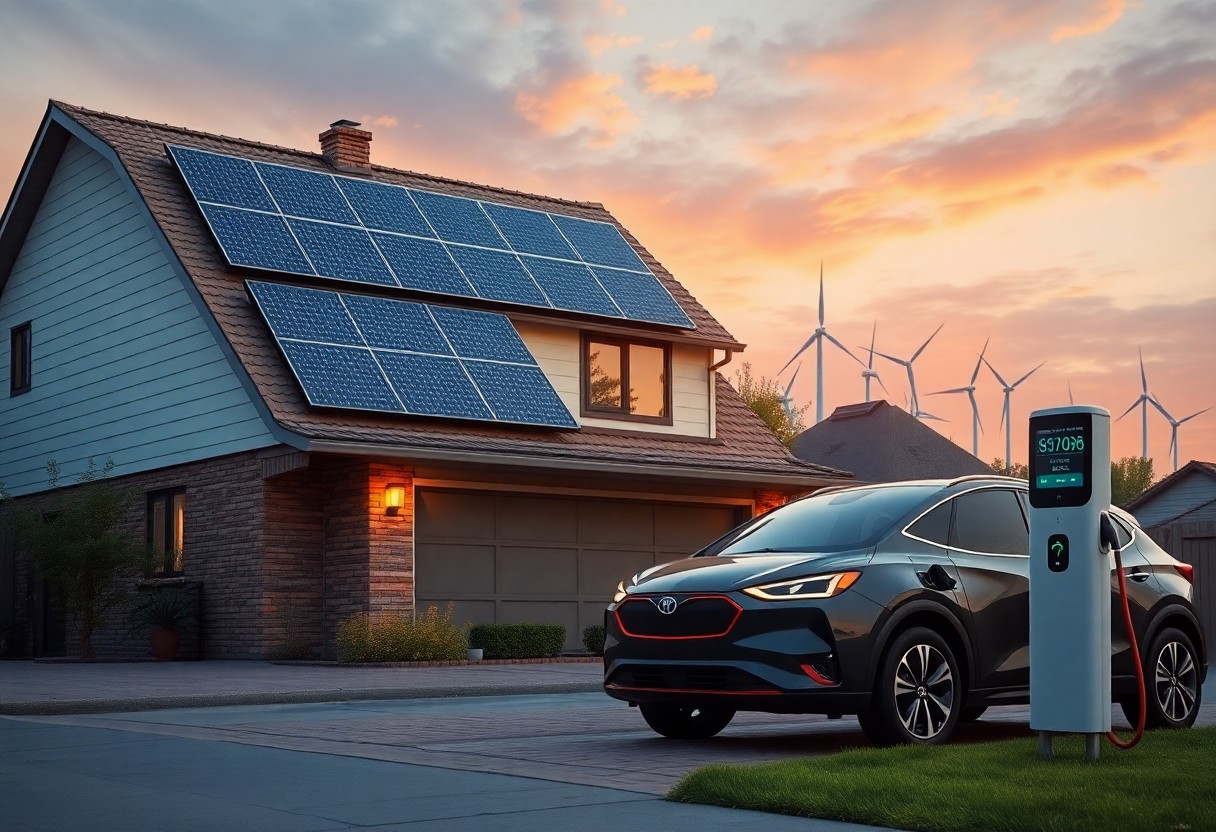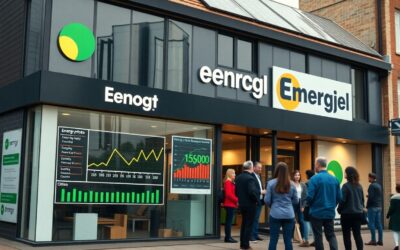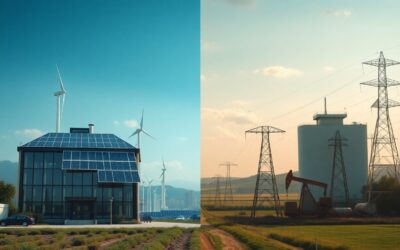There’s a growing interest in green energy, but you may be wondering if opting for eco-friendly companies will lead to higher costs. While it’s true that some green energy providers can be more expensive, they often offer savings in the long run through incentives and lower energy bills. By making the switch, you not only contribute to a healthier planet but also have the potential to reduce your overall energy expenses. This article explores these contrasts to help you make an informed decision.
Understanding Green Energy
While the concept of green energy often evokes a sense of environmental responsibility, it encompasses various sustainable practices that aim to reduce carbon footprints. By harnessing natural resources, green energy provides alternatives to traditional fossil fuels, offering potential savings and sustainability benefits. Understanding how these energy sources work and their impact on emissions can help you make informed decisions about your energy consumption.
Types of Green Energy Sources
While exploring green energy, you will come across several key types:
- Solar – Utilises sunlight to generate electricity.
- Wind – Converts wind energy into power using turbines.
- Hydropower – Generates energy from running water.
- Geothermal – Uses heat from the Earth’s interior.
- Biomass – Employs organic materials for energy production.
Assume that by harnessing these resources, you can contribute to a more sustainable future.
Sources of green energy are varied and abundant. Below is a table summarising the most common renewable energy types:
| Renewable Source | Description |
|---|---|
| Solar | Harnesses sunlight for electricity generation. |
| Wind | Uses turbine technology to generate energy from wind. |
| Hydropower | Energy produced from the movement of water. |
| Geothermal | Extracts heat from the Earth for power. |
| Biomass | Produces energy from organic materials. |
Cost Comparison with Traditional Energy
To evaluate the potential savings from green energy, you should compare its costs with those of traditional energy sources. While the initial setup for renewable sources might be higher, long-term savings can be substantial due to lower maintenance and operational costs.
| Energy Source | Typical Cost |
|---|---|
| Solar | £1,500 to £6,000 per installation. |
| Wind | £1,000 to £3,000 per turbine. |
| Hydropower | Varied, often £10,000+ for small systems. |
| Geothermal | £10,000 to £30,000 installation cost. |
| Biomass | £5,000 to £12,000 setup cost. |
This analysis helps you understand how investing in green energy can lead to potential savings in your overall energy expenditure. It’s vital to consider that while initial costs might be substantial, government incentives, lower utility bills, and environmental benefits can make green energy economically viable in the long run.
| Considerations | Impact |
|---|---|
| Initial Investment | Higher upfront costs. |
| Long-term Savings | Lower energy bills over time. |
| Incentives | Available government grants. |
| Environmental Impact | Lower carbon emissions. |
| Energy Independence | Reduced reliance on fossil fuels. |
Pricing Models of Green Energy Companies
Clearly, understanding the pricing models of green energy companies is important for assessing their affordability and potential savings. These companies often employ various strategies to determine costs, which can affect your overall expenses. Familiarising yourself with these models can help you make informed decisions regarding your energy supplier.
Fixed vs. Variable Pricing
Companies typically offer two main pricing structures: fixed and variable. With fixed pricing, you lock in a specific rate for a set period, providing certainty against market fluctuations. In contrast, variable pricing allows your rate to change based on market conditions, which can result in savings during low-price periods but potential increases when demand rises.
Additional Fees and Charges
Additional fees can significantly impact your overall energy costs. It’s important to scrutinise your energy bill for any extra charges that may not be immediately apparent.
Another factor to consider is the impact of additional fees and charges that green energy companies may impose. These can include installation fees, disconnection charges, and even exit fees should you decide to switch providers. It’s vital to review your contract carefully to avoid any surprises. While some companies might boast lower rates, hidden fees can quickly negate potential savings, making it important for you to actively seek transparency in all charges before committing.
Long-Term Financial Benefits
You may find that over time, investing in green energy can lead to substantial financial advantages. Although there might be an initial increase in costs, the long-term financial returns from reductions in energy bills, alongside the potential for increased property value, can outweigh that upfront investment. Furthermore, the shift toward renewable sources may protect you from fluctuating fossil fuel prices, ensuring greater price stability for your energy needs.
Savings from Renewable Energy
Benefits from renewable energy sources can significantly contribute to your overall savings. By utilising solar panels, wind turbines, or other sustainable technologies, you may experience lower energy bills due to reduced reliance on traditional energy providers. Additionally, many renewable energy systems are designed to last for decades, which means the savings can accumulate over time, offering a stable and affordable energy solution.
Incentives and Subsidies
Against the backdrop of rising costs, various government incentives and subsidies are available to encourage your transition toward renewable energy. These financial aids can significantly reduce the initial outlay, making it easier for you to invest in green technologies without breaking the bank.
In fact, many governments offer tax credits, grants, and rebates specifically for those who adopt renewable energy solutions. These incentives can offset the purchase and installation costs of solar panels or heat pumps, making them more financially accessible. Additionally, some regions provide feed-in tariffs that allow you to sell excess energy back to the grid, creating a potential new revenue stream. Staying informed about these opportunities can result in significant savings and enhance the financial viability of your green energy investment.
Challenges and Considerations
Keep in mind that transitioning to green energy involves various challenges and considerations. While the environmental benefits are clear, you must consider the initial costs, fluctuations in pricing, and the practicality of renewable energy sources in your area. Each of these factors can influence your overall savings and satisfaction with green energy solutions.
Initial Investment Concerns
Across many green energy options, initial investment costs can often be higher compared to traditional energy sources. This can deter you from making the switch, as upfront expenses for technology like solar panels or wind turbines may feel daunting. However, it is crucial to consider the long-term savings and potential incentives that could help offset these initial costs.
Market Fluctuations and Availability
Between the renewable energy market’s volatility and local availability, you may experience unexpected shifts in pricing and access to materials. This can complicate your decision-making process when choosing the best green energy options for your home or business.
Market dynamics play a significant role in green energy availability and price. As demand for renewable resources increases, you might face price fluctuations that affect your initial and ongoing costs. Additionally, local energy policies and resource availability can change, which may impact your ability to rely on certain green energy solutions. Staying informed about local developments and being prepared for supply chain issues will help ensure you can maximise your savings while adapting to any market changes.
Case Studies: Green Energy Impact
Now, numerous case studies illustrate the significant impact of green energy solutions on both the environment and your wallet. Consider these examples:
- The UK company EcoEnergy reported an average 20% reduction in energy bills for households switching to renewable sources.
- In California, a solar panel initiative led to a cumulative $2 billion savings for homeowners over five years.
- In Germany, a nationwide transition to wind energy spurred a 25% decrease in energy costs between 2010 and 2020.
Residential vs. Commercial Savings
Studies reveal that households often see noticeable benefits from adopting green energy but commercial entities can achieve even greater savings. Residential users typically enjoy a 10-15% reduction in energy costs, while businesses leveraging renewable sources often experience 20-30% savings due to scale and efficiency.
Geographic Variability in Costs
Costs can significantly vary based on location, influenced by availability of resources and government incentives.
And while some regions enjoy abundant sunlight for solar energy or consistent winds for wind power, others may face higher costs due to inadequate infrastructure or lack of incentives. For instance, solar energy systems in Northern Europe may be less economical than in sunnier climates like Spain, due to installation costs and weather conditions. Understanding your local landscape is key to maximising the benefits of green energy solutions.
Consumer Perspectives
Your choice of energy provider significantly impacts your household expenses and environmental footprint. With increasing awareness of climate change, many consumers are exploring green energy companies. These companies often promote sustainability, but you may wonder if they genuinely offer cost savings or simply provide a premium service with a higher price tag.
Adoption Rates and Public Sentiment
Among consumers, the adoption of green energy solutions is on the rise, reflecting a growing sentiment towards environmental responsibility. Many individuals are keen on supporting renewable energy initiatives, viewing their decision as a way to contribute to a sustainable future. However, some remain sceptical about potential costs, driving a mixed reception across different demographics.
Satisfaction with Green Energy Solutions
One of the benefits of opting for green energy is the high level of satisfaction reported by many customers. They often feel a sense of accomplishment in supporting environmentally friendly practices, which boosts their overall contentment with their energy choices.
Solutions provided by green energy companies not only contribute to environmental sustainability but also often come with modern, efficient technologies that can enhance your home’s energy use. Many users have found that, despite potential higher upfront costs, green energy can lead to significant long-term savings through reduced bills and possible government incentives. However, it is crucial to research your options, as some may experience occasional issues with reliability or customer service. Ultimately, aligning yourself with a green energy provider indicates a commitment to a brighter and cleaner future.
Conclusion
Hence, while green energy companies may often present higher upfront costs, they can lead to significant savings over time through reduced energy bills and potential government incentives. By choosing renewable energy sources, you not only contribute to a more sustainable future but also position yourself to benefit from decreasing energy prices in the long run. Therefore, assessing your options and understanding the long-term value can help you make an informed decision that aligns with both your financial and environmental priorities.
FAQ
Q: Are green energy companies more expensive than traditional energy providers?
A: Generally, the prices for green energy can vary depending on the specific provider and the energy source used. In some cases, green energy companies may charge slightly higher rates due to the costs associated with renewable technologies and infrastructure. However, many green energy companies are becoming increasingly competitive as the market evolves. Additionally, government incentives and subsidies may help offset costs, making green energy more accessible and potentially lowering overall expenses in the long term.
Q: How can using green energy save me money over time?
A: While the upfront costs of switching to green energy may be higher, there are several ways it can save money in the long run. Renewable energy sources, such as solar and wind, can lead to lower monthly energy bills due to decreased reliance on fossil fuels. Moreover, as technology advances, the cost of renewable energy is steadily decreasing. Consumers who invest in solar panels or other renewable systems may also benefit from incentives and tax credits, further reducing their overall expenses. Additionally, green energy can provide price stability as it is less susceptible to market fluctuations compared to traditional energy sources.
Q: What financial incentives are available for choosing green energy?
A: Financial incentives for choosing green energy vary by region but can include government rebates, tax credits, and grants aimed at promoting the use of renewable energy. Many local governments and utility companies offer programmes that encourage the installation of solar panels, electric vehicle charging stations, and energy-efficient appliances. Furthermore, some regions have specific tariffs or feed-in tariffs for individuals generating their own renewable energy, enabling them to sell surplus energy back to the grid. It is advisable to research available incentives in your area to fully understand how they can benefit your financial situation.




0 Comments